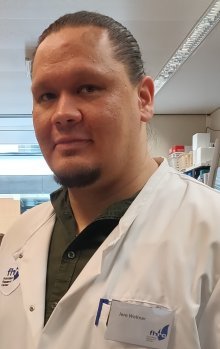Novel cell models advance the research of early embryonic development
What happens in the initial phase of human development? To find an answer to this question, researchers have devised new models based on cell programming that will potentially facilitate the study of the early embryonic development without the need to use actual embryos. Until recently, it has been challenging to carry out research on the mechanisms involved in this development due to limited availability of research samples and ethical considerations.Published 6.7.2023
Writer: Jere Weltner
Image: iStock
Editing: Viestintätoimisto Jokiranta Oy
The early development of a human embryo is a fascinating process. During embryogenesis, the fertilized egg cell, also known as the zygote, transforms from a single cell to a multicellular structure, a blastocyst, which implants itself in the uterus. This process is steered in a clockwork-like manner by a gene regulatory network where the sequential activation of various genetic regulators results in the formation of different kinds of cell types.
The morphology or anatomical transformations during early embryogenesis have long been known. Along with recent advances in single-cell sequencing methods, however, it has become possible to better understand the changes occurring in gene expression at the early embryo stage. The study of associations between gene expression-level changes and the changes in the phenotype of the embryo cells is, nonetheless, still problematic. We need to know more about the interaction of the changes in order to understand properly the molecular mechanisms of the early embryo development.
Gene activity manipulation is problematic
The manipulation of gene activity must take place in a biologically relevant context so as to facilitate the study of associations between gene expression changes and cell phenotype changes. Such manipulation is, however, problematic when it comes to human embryos and their gene activity. The number of embryonic cells, availability of research samples and ethical issues are limiting factors in terms of experimenting on human embryos. One potential alternative is to model early embryonic gene activity by means of stem cell models.
Of the various stem cell models cultured at a laboratory pluripotent stem cells come closest to resembling early embryonic cells. Pluripotent stem cells can either be grown from the inner cell mass of early-stage embryos or derived through the reprogramming of already differentiated adult cells into induced pluripotent stem cells that correspond to embryonic cells.
Induced pluripotent stem cells (iPSCs) can be produced by over-expressing certain early embryonic gene regulators in differentiated cells, such as skin or blood cells. This process is called cellular reprogramming. In our research project, we apply the principles of cellular reprogramming for the purposes of modelling early embryonic gene activity in cultured pluripotent stem cells.
Cell modelling is possible without an actual embryo
The first cell type to differentiate from the cells of the early-stage embryo is the trophectoderm, which will form the outer cell layer of the embryo. Trophectoderm cells differentiate into tissues that support the growth of the embryo and, for example, at a later stage, the embryonic placenta. Pluripotent stems cells do not, however, primarily produce extraembryonic cells for tissues outside the embryo, such as the placenta. This creates an opportunity to study the gene activity of an early embryo through the reprogramming of pluripotent stem cells to form extraembryonic cells.
Based on the results of embryo sequencing research, we have been able to identify certain genes that can be activated so as to reprogram pluripotent stem cells into cell tissue resembling embryonic trophectoderm tissue. This stem cell model facilitates the modelling of the initial cell differentiation of in-vitro cultured cell lines without the need to use actual embryos for research. It also enables us to model the impacts of new early-embryo gene regulators, whose activity is still unknown, on the differentiation of tissues at the early stage of development.
The purpose of our research is to gain enhanced understanding of the molecular-genetic mechanisms in early human embryogenesis. By means of our novel cell model, it may be possible, in the future, to produce better models for modelling the placenta tissue as well. This could advance the research of complications related to the function of the placenta, such as preeclampsia.

Ph.D. Jere Weltner earned his doctoral degree from the University of Helsinki in 2018. His doctoral research concerned the reprogramming of somatic cells to pluripotent stem cells by means of novel methods. Weltner works currently as Senior Scientist at the Folkhälsan Research Center and the University of Helsinki.
